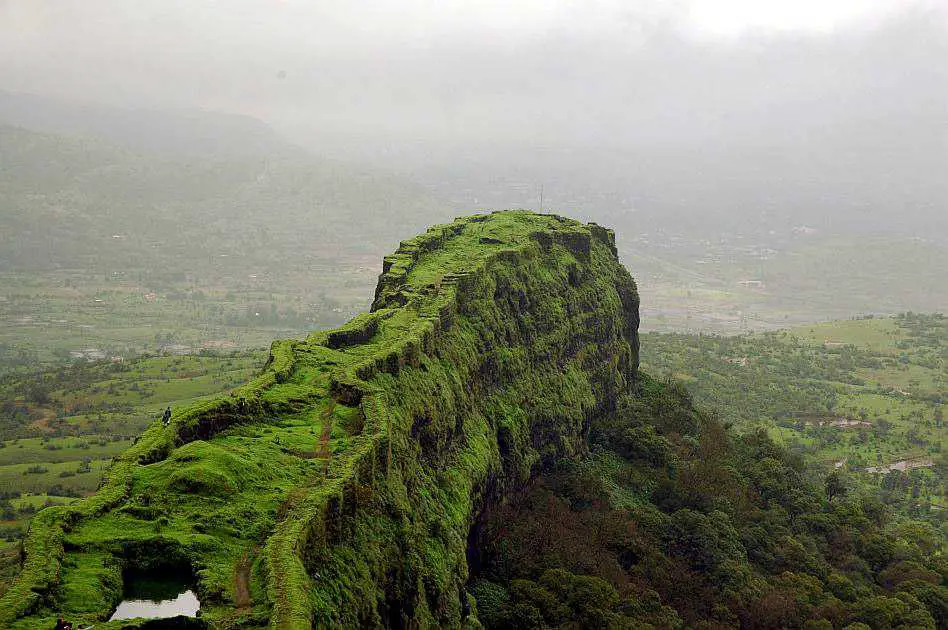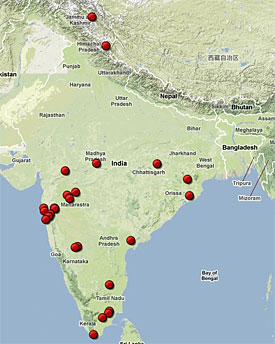World 🢖 Asia 🢖 India 🢖 Maharashtra
Buddhist shrines 🢔 Religious architecture 🢔 Archaeological wonders 🢔 Categories of wonders
Wonder
Thanale Caves
 In short
In short
Just like many other early Buddhist rock-cut temples, Thanale Caves are located next to trade route, leading inland from the ancient port Chaul. These 28 ancient rock-cut structures are located in a beautiful, impressive location and represent an impressive achievement of engineering and art.
 41.8%
41.8%
GPS coordinates
Location, address
Alternate names
Age
Religion
Map of the site
If you see this after your page is loaded completely, leafletJS files are missing.
 In detail
In detail
History
These caves are some of the most ancient rock-cut temples not only in Maharashtra but in the whole of India and were located at the complex site of the trade route, where the path goes through a complicated mountain pass. Here have been found punch-marked silver coins from the times of Emperor Ashoka (268 – 227 BC). Thus it is possible that they were created in the 3rd century BC, although it is possible also that they were built somewhat later. At their heyday, these temples were luxurious and most likely quite influential. It is possible that these caves are “Siristan” mentioned in inscriptions at Pandav Leni Caves, Nashik.
At the end of the 5th century AD, the port of Chaul declined and trade routes changed. Around this time caves were abandoned. Once a lively and beautiful complex of temples was forgotten.
In January 1890 caves were rediscovered to science by missionary J. A. Abnot, although earlier these caves served as a hideout to revolutionary Vasudev Balwant Phadke.
Nowadays the beautiful location and exciting aura of these caves have turned them into a popular destination for trekkers. Unfortunately, this has turned into the humiliation of Indian heritage – beautiful stone-cut ornaments and sculptures of gods and goddesses are covered with worthless graffiti left by “lovers”.
Description
Ancient rock-cut chambers are located in the beautiful mountainous site. The most frequently used path starts in Thanale village and goes through dense forest, along waterfalls and mountain scenery.
Caves are located at the foot of an overhanging enormous cliff. All caves are cut in a row. Unfortunately, the time has taken its toll – facades of caves have been lost due to natural circumstances – fall of rocks. Southernmost 8 – 10 caves are blocked by the collapse of the cave roof.
In total there were made 28 caves. Several caves have exquisite adornment – stone carvings on portals of the doors and ceilings including an impressive relief above the cell door showing serpent deity – naga.
Cave 3 (counting from the northern side) contains 13 stupas.
Cave 13 contains remnants of plaster with paintings, discovered by M.N.Deshpande. Most likely these paintings were created in the late period in the history of these caves – sometimes around the 5th century AD. Ancient artists used just a few colors – red and two shades of yellow, dark blue, and white.
Nearby are located Karsamble Caves which also contain paintings, there are many smaller rock-cut cells in between both groups of caves.
References
- Ancient caves vandalised by ‘Romeos’, The Times of India, 27-10-2002, accessed on May 15, 2010.
- Image gallery – Thanale Caves by Harish, Picasa, accessed on May 15, 2010.
- Indian Archaeology, 1981 – 82 – a review, New Delhi, 1982.
Thanale Caves are included in the following article:
 Linked articles
Linked articles

Buddhist shrines
Buddhism is one of the world religions and at the same time is a spiritual philosophy with diverse traditions, beliefs, and practices. There exists a rich tradition of architecture expressed in Buddhist temples and monasteries.

Wonders of Maharashtra
Maharashtra is a truly splendid state. It has everything – enormous metropolises and countless waterfalls in mountains, urban decay, and architectural splendor, remnants of millennia-old Harappan towns, and modern, very expensive architecture.

Wonders of India
India is the seventh-largest country in the world by area, and, naturally, such a large area contains a huge amount of exciting attractions…
Wondermondo considers that India is the second richest center of architectural heritage in the world after Europe and maybe no single country in the world can match it in this respect.
 Recommended books
Recommended books
India Unveiled: Spirit, Tradition, People
This is the one book you need to understand the spirit of India. Internationally acclaimed as the best book of its type on India, this sixth expanded, revised edition of the multi-award-winning book India Unveiled: Spirit, Tradition, People by Robert Arnett truly reveals the diversity and sacredness of the oldest continuously living civilization on earth.
India: A Sacred Geography
A spiritual history of the world’s most religiously complex and diverse society, from one of Harvard’s most respected scholars.



